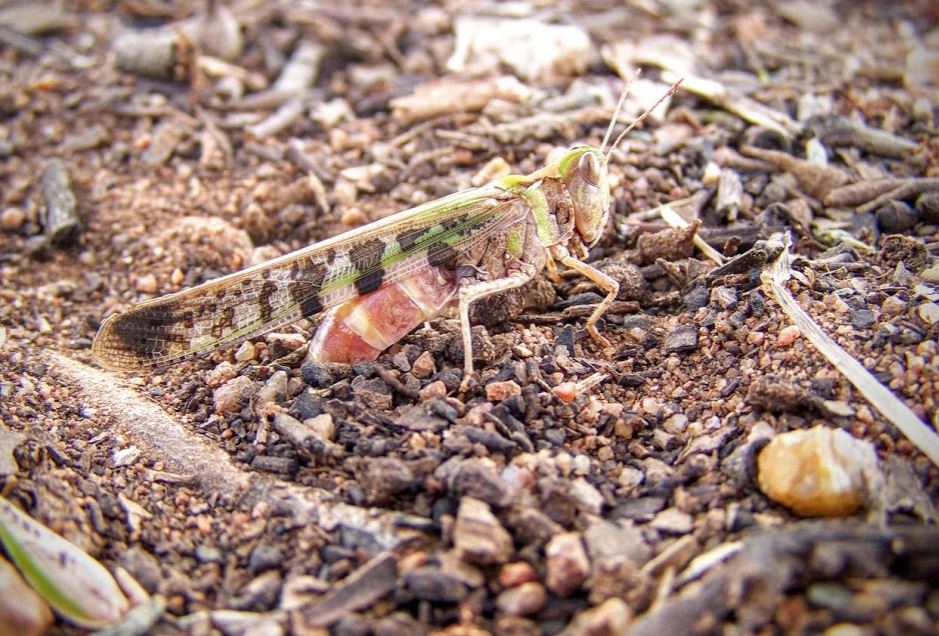Don't be caught on the hop by locusts
 PRODUCTION ADVICE - AUGUST 2020 - INVASIVE SPECIES
PRODUCTION ADVICE - AUGUST 2020 - INVASIVE SPECIES
By John Nolan
Pest Animal Coordinator
P: 03 5881 9921 | M: 0428 629 278 | E: john.p.nolan@lls.nsw.gov.au

If locust eggs were laid in autumn, egg survival will be high due to favourable moisture levels, and hatchlings are likely to emerge in September / October. Plague locusts are a serious agricultural pest and can explode in numbers over a short period.
WHAT TO LOOK FOR
Adult plague locusts usually like to lay eggs in harder loamy red soils, especially on compact roads next to crops, tree lines and farm buildings, especially those built on higher ground such as ridges.
Locust egg beds can be identified by a series of small holes in the earth, but they can be difficult to find. However, a reliable indicator of new hatchlings emerging is the presence of flocks of ibis, wood swallows, crows and other large birds, which like to feed on them.
If you see any indication of locusts hatching near you this September and October, please report it to us as soon as possible. Timing is critical.
You can call our Invasive Species team to report locust activity on 03 5881 9900 (Deniliquin), 03 5886 2100 (Jerilderie) or 02 6051 2200 (Albury.